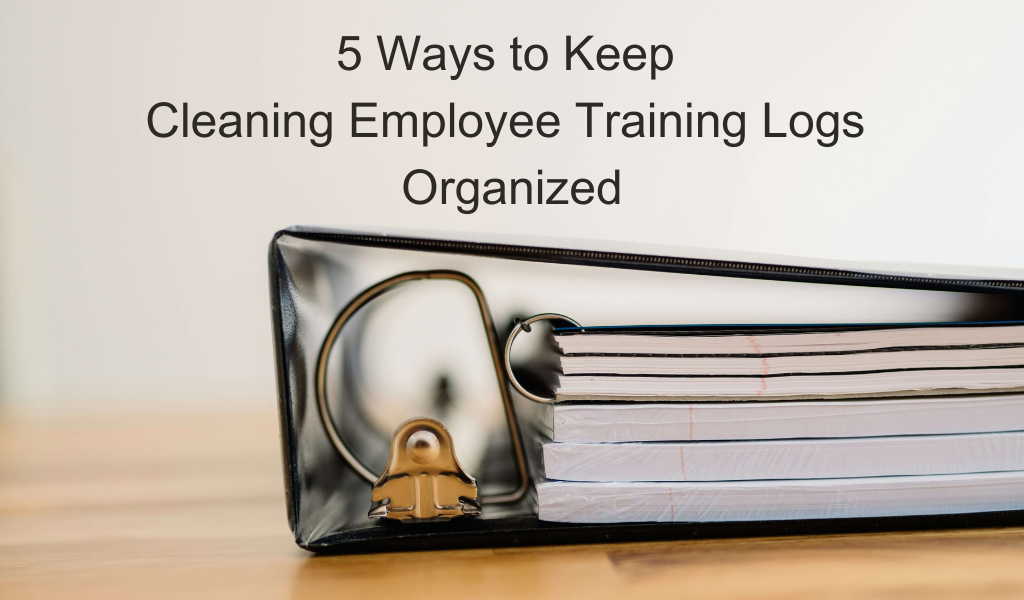Your employee training logs are helpful documents… unless they’re a mess. Here’s how to stay organized.
You have a lot to keep in mind as a business owner. Meetings, bids, follow-ups, invoices, ordering supplies, and planning schedules are just some of the activities that compete for mental space. With so much on your plate, it’s easy to overlook employee growth. That’s one reason employee training logs are so helpful.
Employee training comes with immense benefits for your business, including better customer service, higher-quality work, and a more stable employee roster. However, training usually isn’t a pressing matter. That’s understandable when you’re contending with more immediate issues like hiring, payroll, or equipment breakdowns. It’s a challenge to look at long-term benefits when you’re just trying to make it through the week without falling behind.
Again, though, when you prioritize employee training, many of the challenges of running a small business take care of themselves. You can appoint site supervisors to take care of equipment maintenance or supplies inventory. You can reduce your employee turnover rate, reducing the time and energy it takes to find and train new hires.
Sounds nice enough, right? But with so many other things going on, how do you keep up with training? How do you know who is capable of acting in a supervisory capacity? There’s an easy answer to these questions: employee training logs.
Bid tracking, to-do lists, cleaning checklists, supply inventory, timekeeping… it’s all here. Janitorial Manager can help you organize all your commercial cleaning operations. Schedule a free call with Janitorial Manager to learn more.

A training what? For who?
Even if you aren’t familiar with employee training logs, you’re likely familiar with training logs of some kind. They come up a lot in discussions around exercise, transportation, travel, and other areas where we want records of activities. Check out your latest delivery and you’ll probably see a log of when the order was placed, when it was packed and readied for shipping, when it left its origin, and so on.
A log of any kind is simply a record. And employee training logs are records of employee training. There are numerous reasons to track training.
- Tracking and records are often required for different janitorial certifications.
- Training records help with performance evaluations.
- May help in the event of safety audits.
- Helpful in determining raises and promotions.
- As you grow and potentially add an HR person or department, employee training logs will help them get acquainted with your team.
Getting organized with employee training logs: 5 Ways to thrive
Let’s talk about organization. How can you get your employee training logs in order so they’re easy to keep up with and easy to find when you need them?
There are a couple of important things to point out here. The first is that you need the right tools to do any job. We’re partial to software solutions, such as Janitorial Manager. However, any task management system can help. Even a basic Excel or Google spreadsheet is an option.
The second thing to mention is that any time you adopt a new system, there’s a learning curve. Depending on how complex your record keeping is, this may take more or less time. Don’t get discouraged, though. Yes, you will need to put some work in on the front end of things. But the payoff is grand. And once you have your system in place, it takes a lot less effort to keep it up to date.
Here are 5 ideas that will help keep your employee training logs in order.
1. Dedicate time to set up a system. Whatever system you use to track training, you need to dedicate time to set it up. Put it in your calendar just like you would an appointment for a proposal, meeting a client for an inspection, or scheduling an interview. If you use a system like Janitorial Manager, onboarding and training are included.
2. Schedule time for updates. Once you have your system up and running, it’s a lot easier to update your records. However, it’s still important to schedule this time. It’s so easy to put things off “until we get to them,” but that often means we don’t get to them. That, of course, ends up in a frustrating game of catch-up. One easy way to schedule this time is to set aside 10 or 20 minutes (or however long you need) at the same time you schedule training. Then your record updates are already on the calendar.
3. Include the training program. One janitorial training is not necessarily like the next. Including an outline or program of the training can help you verify what information the training covered.
4. Keep a backup! Especially if all your records are isolated on a laptop or computer, make sure you have a backup somewhere. Either in the cloud or on another system is fine. But if you only have your records in one item, if anything happens to that item, all your records are gone.
5. Choose a filing system and stick to it. Everyone has their favorite filing system. You can organize records by year, by category, by employee, or by location if you have multiple offices. One isn’t better than another. The important thing here is consistency. If you start mixing up your system, it’s much more difficult to find what you need.
Keep up with your customers, staff training, schedules, and checklists. Learn more today with a discovery call and find out how to make your cleaning operation more efficient, cost-effective, and better for everyone!

